-
Oil, gas wastewater disposal pollutes surface water, harm waterways
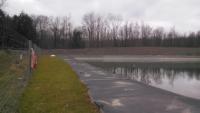
Unconventional oil and gas (UOG) operations combine directional drilling and hydraulic fracturing, or “fracking,” to release natural gas and oil from underground rock. This process results in in water pollution which may increase endocrine disrupting chemicals (EDCs) in surface and ground water, exposing populations living near these operations to increased risk of disease. High levels of EDC activity were found in the surface water near a hydraulic fracturing wastewater disposal facility in West Virginia. Approximately 36,000 of these disposal wells are currently in operation across the United States.
-
-
Renewables and nuclear no substitute for carbon dioxide disposal
Oxford scientist argues that there are only two things we can affect with policies today that will really matter for peak warming: reducing the cost of large-scale capture and disposal of carbon dioxide, and maximizing the average rate of economic growth we achieve for a given rate of emission in the meantime.
-
-
Fracking linked to most induced earthquakes in western Canada
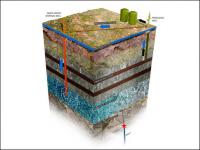
A survey of a major oil and natural gas-producing region in Western Canada suggests a link between hydraulic fracturing or “fracking” and induced earthquakes in the region. The study’s findings differ from those reported from oil and gas fields in the central United States, where fracking is not considered to be the main cause of a sharp rise in induced seismicity in the region. Instead, the proliferation of hundreds of small earthquakes in that part of the United States is thought to be caused primarily by massive amounts of wastewater injected back into the ground after oil and gas recovery.
-
-
Fukushima five years on: Three lessons from the disaster

It has been five years since the emergency sirens sounded at Japan’s Fukushima Daiichi power plant following the massive 2011 earthquake and subsequent devastating tsunami. The partial meltdown of three reactors caused approximately 170,000 refugees to be displaced from their homes, and radiation releases and public outcry forced the Japanese government to temporarily shut down all of their nuclear power plants. On the fifth anniversary of the partial meltdown at Japan’s Fukushima Daiichi Power Plant, Stanford’s Rodney Ewing says we should rethink our language, reassess natural disaster risks, and appreciate the links between nuclear energy and renewables.
-
-
Resources used for biofuel reduce resources available for food production
As strategies for energy security, investment opportunities and energy policies prompt ever-growing production and consumption of biofuels like bioethanol and biodiesel, land, and water that could otherwise be used for food production increasingly are used to produce crops for fuel. A new study shows about a third of the world’s malnourished population could be fed by using resources now used for biofuel production.
-
-
World economy unlikely to stop relying on fossil fuels: Study
On the heels of last year’s historic climate agreement in Paris, a new study concludes that fossil fuel consumption is likely to grow without clear and decisive global action to put an adequate price on carbon dioxide emissions and increased clean energy technology.
-
-
Rapid, affordable energy transformation in U.S. possible
The United States could slash greenhouse gas emissions from power production by up to 78 percent below 1990 levels within fifteen years while meeting increased demand, according to a new study. The study used a sophisticated mathematical model to evaluate future cost, demand, generation, and transmission scenarios. It found that with improvements in transmission infrastructure, weather-driven renewable resources could supply most of the nation’s electricity at costs similar to today’s.
-
-
Breakthrough in continuous monitoring of CO2 leaks from carbon storage sites
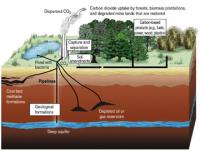
Underground storage of CO2 produced from fossil fuel burning, rather than releasing it into the atmosphere, could play an important role in suppressing climate change. Ensuring that the CO2 does not leak from the storage site is key – but the high number of surveys necessary to make sure there is no CO2 leak makes this a costly endeavor. A team of Japanese researchers may have found a means of achieving easier and lower-cost monitoring for leaks of CO2 stored in underground reservoirs.
-
-
Global learning required to prevent carbon capture, storage from being abandoned
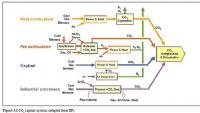
Governments should not be abandoning carbon capture and storage, argues a Cambridge researcher, as it is the only realistic way of dramatically reducing carbon emissions. Instead, they should be investing in global approaches to learn what works – and what doesn’t.
-
-
Toxins found in fracking fluids and wastewater: Study

In an analysis of more than 1,000 chemicals in fluids used in and created by hydraulic fracturing (fracking), researchers found that many of the substances have been linked to reproductive and developmental health problems, and the majority had undetermined toxicity due to insufficient information. The researchers say that further exposure and epidemiological studies are urgently needed to evaluate potential threats to human health from chemicals found in fracking fluids and wastewater created by fracking.
-
-
Gov. Brown declares emergency in wake of massive L.A. natural gas leak
California governor Jerry Brown on Wednesday declared an emergency in a Los Angeles neighborhood where a natural gas well has been spewing record amounts of stinking, global-warming methane gas. Energy experts said the breach at the natural gas storage reservoir, and the subsequent, ongoing release, are the largest known occurrence of its kind.
-
-
Global electricity production vulnerable to climate change, water resource decline

Climate change impacts and associated changes in water resources could lead to reductions in electricity production capacity for more than 60 percent of the power plants worldwide from 2040-2069. A new study calls for a greater focus on adaptation efforts in order to maintain future energy security. Making power plants more efficient and flexible could mitigate much of the decline.
-
-
Making cleaner fuel cells
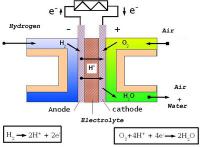
There is a near unanimity in the scientific community that the average temperature on the planet is rising and this is happening because of the increased concentration of carbon dioxide in the atmosphere. Radically redesigning virtually all technological infrastructure is not possible without an acceptable alternative to internal combustion engines: either electric accumulators and electric motors, or fuel cells with electric motors. Fuel cells themselves will not solve the problem of rising temperatures on the planet, but they are part of a possible solution. Researchers have developed ion-exchange synthetic membranes based on amphiphilic compounds that are able to convert the energy of chemical reactions into electrical current.
-
-
Harnessing distributed energy devices to balance the power grid

The electric grid has to balance power supply and demand nearly in real-time, requiring power plants to be adjusted on a second-by-second basis. This instantaneous balance is made significantly more complex by renewable energy such as wind and solar, which add more uncertainty and variability. A new research project is proposing a unique solution to this growing problem: employing the millions of distributed energy resources that already exist, such as solar panels on rooftops and heating and cooling systems in buildings.
-
-
Making the power grid more resilient, flexible
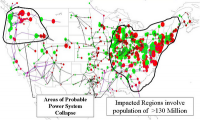
“The biggest and most complex machine ever built by humankind” – this is how one researcher describes the U.S. power grid. A research team has been charged with the formidable task of transforming that big and complex machine from the inside out. Inverters convert DC (direct current) electricity to AC (alternating current) electricity, the kind that forms the basis of today’s power grid. To integrate more inverter-based distributed generation into the grid, the researchers are developing a dynamic distribution system (DDS) that supplements centralized power plants, instead of replacing them.
-
More headlines
The long view
Using Liquid Air for Grid-Scale Energy Storage
New research finds liquid air energy storage could be the lowest-cost option for ensuring a continuous power supply on a future grid dominated by carbon-free but intermittent sources of electricity.
Enhanced Geothermal Systems: A Promising Source of Round-the-Clock Energy
With its capacity to provide 24/7 power, many are warming up to the prospect of geothermal energy. Scientists are currently working to advance human-made reservoirs in Earth’s deep subsurface to stimulate the activity that exists within natural geothermal systems.
Experts Discuss Geothermal Potential
Geothermal energy harnesses the heat from within Earth—the term comes from the Greek words geo (earth) and therme (heat). It is an energy source that has the potential to power all our energy needs for billions of years.
